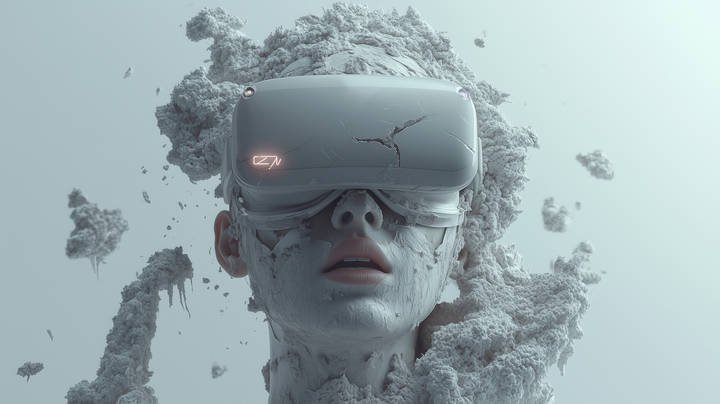Hybrid Collapse transforms creativity into computation — merging AI co-authorship, neural rendering, and data-driven workflows into a new cultural format. More than an art project, it shows how code, algorithms, and digital infrastructures now define the aesthetics, distribution, and memory of music and visuals in the age of total digitalization.

A Cultural Project Built on Computation
In the 21st century, art is inseparable from the infrastructures of technology. Hybrid Collapse demonstrates this convergence by building its identity on artificial intelligence, computational workflows, and the global circulation of data. Rather than simply using digital tools as instruments, the project embraces them as co-authors, reshaping how music, visuals, and ideas are produced and distributed.
Hybrid Collapse illustrates how deeply computing now penetrates culture: not only as background infrastructure but as the very stage on which creativity unfolds.
Artificial Intelligence as Creative Partner
Where traditional media relied on instruments, cameras, or editing suites, Hybrid Collapse relies on neural networks and generative systems. AI models create faces, bodies, and environments that feel at once surreal and lifelike. In music, machine learning contributes to rhythm design, granular synthesis, and sound textures that exceed the limitations of human imagination.
This is not automation replacing creativity but dialogue:
- The machine generates unpredictable forms.
- Human artists guide and curate them.
- Feedback loops refine the work into an integrated aesthetic.
By embedding AI directly into the artistic process, Hybrid Collapse reveals the new grammar of digital culture, where algorithms no longer hide in the background but become visible as aesthetic material.
Data as Material and Medium
Modern computing thrives on data, and Hybrid Collapse treats data as both material and medium. Every visual, every sound, every sequence is generated through layers of datasets — images, sound archives, motion libraries — reorganized by algorithms into something new.
This reflects a broader transformation in culture itself. We live in a time when personal identity, political discourse, and even memory are mediated by data streams. Hybrid Collapse reflects this condition aesthetically: fragmented textures, recursive loops, and glitch structures that echo the rhythms of our digital lives.
In this sense, the project is not only about AI — it is about data-driven perception, where culture is continuously recomposed by the flows of information that define the digital age.
Computing Infrastructure as Stage
Behind the immersive visuals and experimental sound lies infrastructure — cloud rendering, GPU clusters, distributed workflows. High-resolution AI videos cannot exist without massive computing power, and immersive audio depends on spatial processing handled by specialized software.
Hybrid Collapse mirrors the logic of IT engineering: modular pipelines, continuous integration, and scalable deployment. Each release resembles a software launch, where algorithms and servers are as central as microphones or cameras. The backstage of the project looks more like a tech startup than a traditional studio, reflecting how culture now grows inside the same infrastructures as commerce, research, and finance.
Algorithms and the Attention Economy
Entertainment today is mediated by algorithms — TikTok, YouTube, Spotify — and Hybrid Collapse consciously engages with this system. Its videos are designed with loopable sequences, visual climaxes, and rhythmic pacing that resonate with algorithmic feeds.
At the same time, the project critiques this dependency. By embedding fragmentation, repetition, and glitch aesthetics into its art, it highlights how our psychology is shaped by algorithms — trained to seek novelty, rhythm, and instant impact. Hybrid Collapse thus exists as both a participant in and a commentary on the attention economy.
Preservation and Digital Continuity
One of the hidden challenges of digital art is preservation. File formats become obsolete, platforms change, algorithms evolve. Hybrid Collapse responds by treating its models, scripts, and audiovisual assets as cultural archives, preserved through encryption, redundant storage, and migration to open formats.
This approach points to a critical question: how will AI-generated art be remembered in decades to come? Hybrid Collapse insists that preservation is not an afterthought but an essential part of creative practice in the digital era.
Toward an Algorithmic Aesthetic
Ultimately, Hybrid Collapse presents a vision of creativity where art and technology are inseparable. Its use of AI, data, and computational infrastructure is not an accessory — it is the foundation.
This is not art about the future; it is art built from the infrastructures of the present: data pipelines, algorithmic governance, machine learning, and platform circulation. Hybrid Collapse suggests that the aesthetics of the 21st century will not emerge from isolated studios but from the same networks and systems that organize global life.

